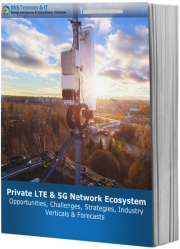
|
시장보고서
상품코드
1675830
고정 LTE 시장 : 솔루션별, 사용자별, 지역별(2025-2033년)Fixed LTE Market by Solution (LTE Infrastructure, and Others), User (Residential, Commercial), and Region 2025-2033 |
||||||
고정 LTE 세계 시장 규모는 2024년 463억 달러에 달했습니다. 향후 IMARC Group은 2033년에는 2,338억 달러로 2025-2033년 연평균 성장률(CAGR)이 18.74%에 달할 것으로 전망하고 있습니다. 초고속 인터넷에 대한 수요 증가, IoT 기기의 보급 확대, 공중 통신망 사업자와 통신 벤더의 증가 등이 시장을 견인하는 주요 요인으로 작용하고 있습니다.
고정 LTE(Long Term Evolution)는 GSM(global system for mobile communication), EDGE(enhanced data rates for GSM evolution), HSPA(high-speed packet access), UMTS(universal mobile telecommunications system) 등의 셀룰러 네트워크 기술을 기반으로 한 무선 광대역 연결의 일종으로 가정과 기업에 인터넷 접속을 제공합니다. 고정된 장소에 인터넷을 제공하기 위해 물리적 케이블이나 광섬유 회선에 의존하는 기존 광대역 연결과 달리, 고정 LTE는 셀룰러 타워를 통해 무선으로 데이터를 전송합니다. 유선 연결에 따른 설치 비용과 대기 시간을 피하기 위해 지방이나 외딴 지역에서 널리 채택되고 있습니다. 또한, 매우 유연하고 쉽게 이동 및 재배치가 가능하기 때문에 임시 설치에 적합합니다.
고정 LTE 시장 동향:
고정 LTE 시장의 성장을 견인하는 것은 저렴한 비용으로 빠른 인터넷에 대한 수요 증가와 전 세계 데이터 소비 증가입니다. 이 외에도 사물인터넷(IoT) 플랫폼에 의한 인터넷 적용 범위 확대, LTE 지원 기기의 보급, 인터넷 검색, 비디오 스트리밍, 온라인 게임, 기타 데이터 집약적 애플리케이션에 대한 스마트폰, 태블릿, 노트북 PC 의존도가 높아지면서 시장 성장에 기여하고 있습니다. 또한, 고정 LTE 인프라에 대한 대규모 투자로 인해 통신 사업자와 통신 벤더가 급증하여 고객에게 고속 인터넷 연결을 제공하고 있는 것도 시장 전망을 밝게 하고 있습니다. 이에 따라 고정 LTE 네트워크는 매력적인 비용 효율성을 제공하고 사용자 수 증가와 라스트 마일 애플리케이션을 지원하는 데 필요한 속도, 용량 및 대역폭을 제공합니다. 이와 더불어, 주거 지역, 특히 기존 광대역 서비스를 이용할 수 없는 인구 밀집 지역과 농촌 지역에서의 고정 LTE의 보급이 시장 확대를 촉진하고 있습니다. 이와 함께 원격 근무 트렌드 변화, 클라우드 기반 서비스의 대규모 채택, 저지연이 필요한 애플리케이션의 증가 등은 시장에 유익한 성장 기회를 제공하고 있습니다. 또한, 5세대(5G), 매시브 MIMO, 네트워크 슬라이싱, 가상현실(VR), 증강현실(AR)과 같은 혁신적인 기술의 등장도 성장을 촉진하는 요인으로 작용하고 있습니다.
본 보고서에서 다루는 주요 질문
- 세계 고정 LTE 시장은 지금까지 어떻게 성장해 왔을까?
- 세계 고정 LTE 시장의 촉진요인, 억제요인, 기회는 무엇인가?
- 각 촉진요인, 억제요인, 기회가 세계 고정 LTE 시장에 미치는 영향은?
- 주요 지역 시장은?
- 가장 매력적인 고정 LTE 시장은 어느 국가인가?
- 솔루션별 시장 현황은?
- 고정 LTE에서 가장 매력적인 솔루션은?
- 사용자별 시장 분석은 어떻게 되는가?
- 고정 LTE 시장에서 가장 매력적인 사용자는?
- 세계 고정 LTE 시장의 경쟁 구도는?
- 세계 고정 LTE 시장의 주요 플레이어/기업은?
목차
제1장 서문
제2장 조사 범위와 조사 방법
- 조사 목적
- 이해관계자
- 데이터 소스
- 1차 정보
- 2차 정보
- 시장 추정
- 상향식 접근
- 하향식 접근
- 조사 방법
제3장 주요 요약
제4장 소개
- 개요
- 주요 업계 동향
제5장 세계의 고정 LTE 시장
- 시장 개요
- 시장 실적
- COVID-19의 영향
- 시장 예측
제6장 시장 내역 : 솔루션별
- LTE 인프라
- 기타
- 주요 부문
- 실내 CPE
- 야외 CPE
- 주요 부문
제7장 시장 내역 : 사용자별
- 주거용
- 상업용
제8장 시장 내역 : 지역별
- 북미
- 미국
- 캐나다
- 아시아태평양
- 중국
- 일본
- 인도
- 한국
- 호주
- 인도네시아
- 기타
- 유럽
- 독일
- 프랑스
- 영국
- 이탈리아
- 스페인
- 러시아
- 기타
- 라틴아메리카
- 브라질
- 멕시코
- 기타
- 중동 및 아프리카
- 시장 내역 : 국가별
제9장 촉진요인, 억제요인, 기회
- 개요
- 성장 촉진요인
- 성장 억제요인
- 기회
제10장 밸류체인 분석
제11장 Porter's Five Forces 분석
- 개요
- 구매자의 교섭력
- 공급 기업의 교섭력
- 경쟁 정도
- 신규 참여업체의 위협
- 대체품의 위협
제12장 가격 분석
제13장 경쟁 구도
- 시장 구조
- 주요 기업
- 주요 기업 개요
- AT&T Inc.
- Cisco Systems Inc.
- Commscope Holding Company, Inc.
- Huawei Technologies Co., Ltd.
- Netgear, Inc.
- Sagemcom
- Samsung Group
- Telenet Systems Pvt. Ltd
- Telrad Networks
- Vantiva
- Zyxel Communications Corp(Unizyx Holding Corporation)
The global fixed LTE market size reached USD 46.3 Billion in 2024. Looking forward, IMARC Group expects the market to reach USD 233.8 Billion by 2033, exhibiting a growth rate (CAGR) of 18.74% during 2025-2033. The growing need for high-speed internet, the increasing proliferation of IoT devices, and the rising number of public communication network operators and telecom vendors represent some of the key factors driving the market.
Fixed LTE (Long Term Evolution) is a type of wireless broadband connection based on cellular network technologies, such as global system for mobile communication (GSM), enhanced data rates for GSM evolution (EDGE), high-speed packet access (HSPA), and universal mobile telecommunications system (UMTS), to provide internet access to homes and businesses. Unlike traditional broadband connections, which rely on a physical cable or fiber-optic line to deliver internet to a fixed location, fixed LTE uses cellular towers to transmit data wirelessly. It is widely adopted in rural or remote areas and to avoid the installation costs and wait times associated with wired connections. In addition to this, it is extremely flexible and can be easily moved or relocated, making it ideal for temporary installations.
Fixed LTE Market Trends:
The growing need for low-cost, high-speed internet and the increasing global data consumption are primarily driving the fixed LTE market growth. Besides this, the expanding applicability of the internet with the internet of things (IoT) platforms, the proliferation of LTE-enabled devices, and the escalating reliance on smartphones, tablets, and laptops for internet browsing, video streaming, online gaming, and other data-intensive applications are contributing to the market growth. Moreover, extensive investments in fixed LTE infrastructure to provide high-speed internet connectivity to their customers through a surging number of public communication network operators and telecom vendors are creating a positive outlook for the market. In line with this, fixed LTE networks offer an attractive cost-benefit ratio and provide the necessary speed, capacity, and bandwidth to support the increasing number of users and last-mile applications, which, in turn, is strengthening the market growth. In addition to this, the widespread deployment of fixed LTE in residential areas, especially in underdeveloped and rural areas where traditional broadband services are not available, is aiding in market expansion. Concurrent with this, shifting trends of remote working, the large-scale adoption of cloud-based services, and the increasing number of applications that require low latency are presenting remunerative growth opportunities for the market. Furthermore, the emergence of innovative technologies, such as the fifth generation (5G), massive MIMO, network slicing and virtual reality (VR), and augmented reality (AR), is acting as another growth-inducing factor.
Key Market Segmentation:
Solution Insights:
- LTE Infrastructure
- Others
- Indoor CPE
- Outdoor CPE
User Insights:
- Residential
- Commercial
Regional Insights:
- North America
- United States
- Canada
- Asia Pacific
- China
- Japan
- India
- South Korea
- Australia
- Indonesia
- Others
- Europe
- Germany
- France
- United Kingdom
- Italy
- Spain
- Russia
- Others
- Latin America
- Brazil
- Mexico
- Others
- Middle East and Africa
- The report has also provided a comprehensive analysis of all the major regional markets, which include North America (the United States and Canada); Asia Pacific (China, Japan, India, South Korea, Australia, Indonesia, and others); Europe (Germany, France, the United Kingdom, Italy, Spain, Russia, and others); Latin America (Brazil, Mexico, and others); and the Middle East and Africa. According to the report, Asia Pacific was the largest market for fixed LTE. Some of the factors driving the Asia Pacific fixed LTE market included the growing demand for connectivity, the proliferation of smartphones, and the increasing utilization of fixed LTE in residential areas.
Competitive Landscape:
- The report has also provided a comprehensive analysis of the competitive landscape in the global fixed LTE market. Competitive analysis such as market structure, market share by key players, player positioning, top winning strategies, competitive dashboard, and company evaluation quadrant has been covered in the report. Also, detailed profiles of all major companies have been provided. Some of the companies covered include AT&T Inc., Cisco Systems Inc., Commscope Holding Company, Inc., Huawei Technologies Co., Ltd., Netgear, Inc., Sagemcom, Samsung Group, Telenet Systems Pvt. Ltd, Telrad Networks, Vantiva, Zyxel Communications Corp (Unizyx Holding Corporation), etc.
Key Questions Answered in This Report:
- How has the global fixed LTE market performed so far, and how will it perform in the coming years ?
- What are the drivers, restraints, and opportunities in the global fixed LTE market ?
- What is the impact of each driver, restraint, and opportunity on the global fixed LTE market ?
- What are the key regional markets ?
- Which countries represent the most attractive fixed LTE market ?
- What is the breakup of the market based on the solution ?
- Which is the most attractive solution in the fixed LTE market ?
- What is the breakup of the market based on the user ?
- Which is the most attractive user in the fixed LTE market ?
- What is the competitive structure of the global fixed LTE market ?
- Who are the key players/companies in the global fixed LTE market ?
Table of Contents
1 Preface
2 Scope and Methodology
- 2.1 Objectives of the Study
- 2.2 Stakeholders
- 2.3 Data Sources
- 2.3.1 Primary Sources
- 2.3.2 Secondary Sources
- 2.4 Market Estimation
- 2.4.1 Bottom-Up Approach
- 2.4.2 Top-Down Approach
- 2.5 Forecasting Methodology
3 Executive Summary
4 Introduction
- 4.1 Overview
- 4.2 Key Industry Trends
5 Global Fixed LTE Market
- 5.1 Market Overview
- 5.2 Market Performance
- 5.3 Impact of COVID-19
- 5.4 Market Forecast
6 Market Breakup by Solution
- 6.1 LTE Infrastructure
- 6.1.1 Market Trends
- 6.1.2 Market Forecast
- 6.2 Others
- 6.2.1 Market Trends
- 6.2.2 Key Segments
- 6.2.2.1 Indoor CPE
- 6.2.2.2 Outdoor CPE
- 6.2.3 Market Forecast
7 Market Breakup by User
- 7.1 Residential
- 7.1.1 Market Trends
- 7.1.2 Market Forecast
- 7.2 Commercial
- 7.2.1 Market Trends
- 7.2.2 Market Forecast
8 Market Breakup by Region
- 8.1 North America
- 8.1.1 United States
- 8.1.1.1 Market Trends
- 8.1.1.2 Market Forecast
- 8.1.2 Canada
- 8.1.2.1 Market Trends
- 8.1.2.2 Market Forecast
- 8.1.1 United States
- 8.2 Asia-Pacific
- 8.2.1 China
- 8.2.1.1 Market Trends
- 8.2.1.2 Market Forecast
- 8.2.2 Japan
- 8.2.2.1 Market Trends
- 8.2.2.2 Market Forecast
- 8.2.3 India
- 8.2.3.1 Market Trends
- 8.2.3.2 Market Forecast
- 8.2.4 South Korea
- 8.2.4.1 Market Trends
- 8.2.4.2 Market Forecast
- 8.2.5 Australia
- 8.2.5.1 Market Trends
- 8.2.5.2 Market Forecast
- 8.2.6 Indonesia
- 8.2.6.1 Market Trends
- 8.2.6.2 Market Forecast
- 8.2.7 Others
- 8.2.7.1 Market Trends
- 8.2.7.2 Market Forecast
- 8.2.1 China
- 8.3 Europe
- 8.3.1 Germany
- 8.3.1.1 Market Trends
- 8.3.1.2 Market Forecast
- 8.3.2 France
- 8.3.2.1 Market Trends
- 8.3.2.2 Market Forecast
- 8.3.3 United Kingdom
- 8.3.3.1 Market Trends
- 8.3.3.2 Market Forecast
- 8.3.4 Italy
- 8.3.4.1 Market Trends
- 8.3.4.2 Market Forecast
- 8.3.5 Spain
- 8.3.5.1 Market Trends
- 8.3.5.2 Market Forecast
- 8.3.6 Russia
- 8.3.6.1 Market Trends
- 8.3.6.2 Market Forecast
- 8.3.7 Others
- 8.3.7.1 Market Trends
- 8.3.7.2 Market Forecast
- 8.3.1 Germany
- 8.4 Latin America
- 8.4.1 Brazil
- 8.4.1.1 Market Trends
- 8.4.1.2 Market Forecast
- 8.4.2 Mexico
- 8.4.2.1 Market Trends
- 8.4.2.2 Market Forecast
- 8.4.3 Others
- 8.4.3.1 Market Trends
- 8.4.3.2 Market Forecast
- 8.4.1 Brazil
- 8.5 Middle East and Africa
- 8.5.1 Market Trends
- 8.5.2 Market Breakup by Country
- 8.5.3 Market Forecast
9 Drivers, Restraints, and Opportunities
- 9.1 Overview
- 9.2 Drivers
- 9.3 Restraints
- 9.4 Opportunities
10 Value Chain Analysis
11 Porters Five Forces Analysis
- 11.1 Overview
- 11.2 Bargaining Power of Buyers
- 11.3 Bargaining Power of Suppliers
- 11.4 Degree of Competition
- 11.5 Threat of New Entrants
- 11.6 Threat of Substitutes
12 Price Analysis
13 Competitive Landscape
- 13.1 Market Structure
- 13.2 Key Players
- 13.3 Profiles of Key Players
- 13.3.1 AT&T Inc.
- 13.3.1.1 Company Overview
- 13.3.1.2 Product Portfolio
- 13.3.1.3 Financials
- 13.3.1.4 SWOT Analysis
- 13.3.2 Cisco Systems Inc.
- 13.3.2.1 Company Overview
- 13.3.2.2 Product Portfolio
- 13.3.2.3 Financials
- 13.3.2.4 SWOT Analysis
- 13.3.3 Commscope Holding Company, Inc.
- 13.3.3.1 Company Overview
- 13.3.3.2 Product Portfolio
- 13.3.3.3 Financials
- 13.3.3.4 SWOT Analysis
- 13.3.4 Huawei Technologies Co., Ltd.
- 13.3.4.1 Company Overview
- 13.3.4.2 Product Portfolio
- 13.3.4.3 SWOT Analysis
- 13.3.5 Netgear, Inc.
- 13.3.5.1 Company Overview
- 13.3.5.2 Product Portfolio
- 13.3.5.3 Financials
- 13.3.5.4 SWOT Analysis
- 13.3.6 Sagemcom
- 13.3.6.1 Company Overview
- 13.3.6.2 Product Portfolio
- 13.3.7 Samsung Group
- 13.3.7.1 Company Overview
- 13.3.7.2 Product Portfolio
- 13.3.7.3 Financials
- 13.3.7.4 SWOT Analysis
- 13.3.8 Telenet Systems Pvt. Ltd
- 13.3.8.1 Company Overview
- 13.3.8.2 Product Portfolio
- 13.3.9 Telrad Networks
- 13.3.9.1 Company Overview
- 13.3.9.2 Product Portfolio
- 13.3.10 Vantiva
- 13.3.10.1 Company Overview
- 13.3.10.2 Product Portfolio
- 13.3.10.3 Financials
- 13.3.10.4 SWOT Analysis
- 13.3.11 Zyxel Communications Corp (Unizyx Holding Corporation)
- 13.3.11.1 Company Overview
- 13.3.11.2 Product Portfolio
- 13.3.1 AT&T Inc.
Kindly note that this only represents a partial list of companies, and the complete list has been provided in the report.



















